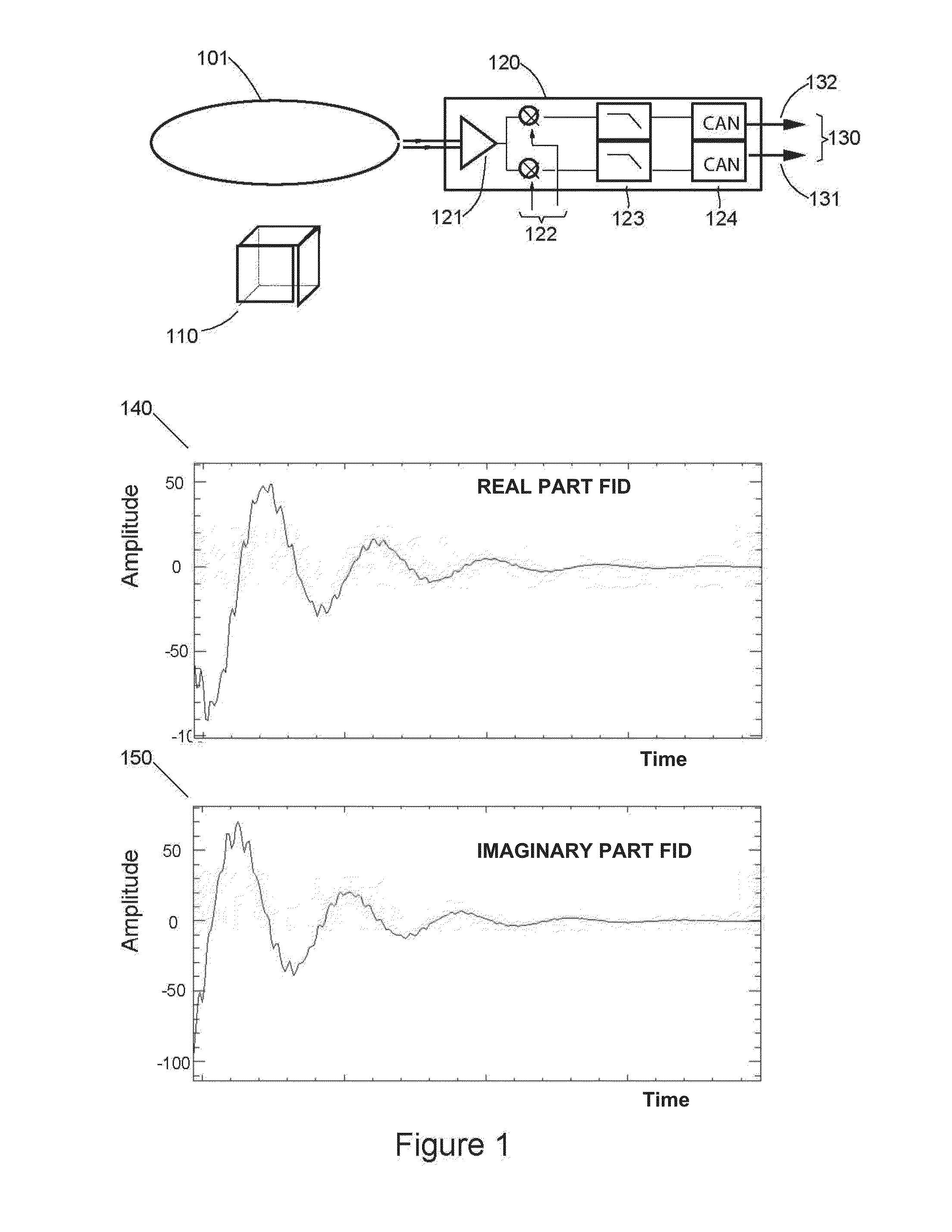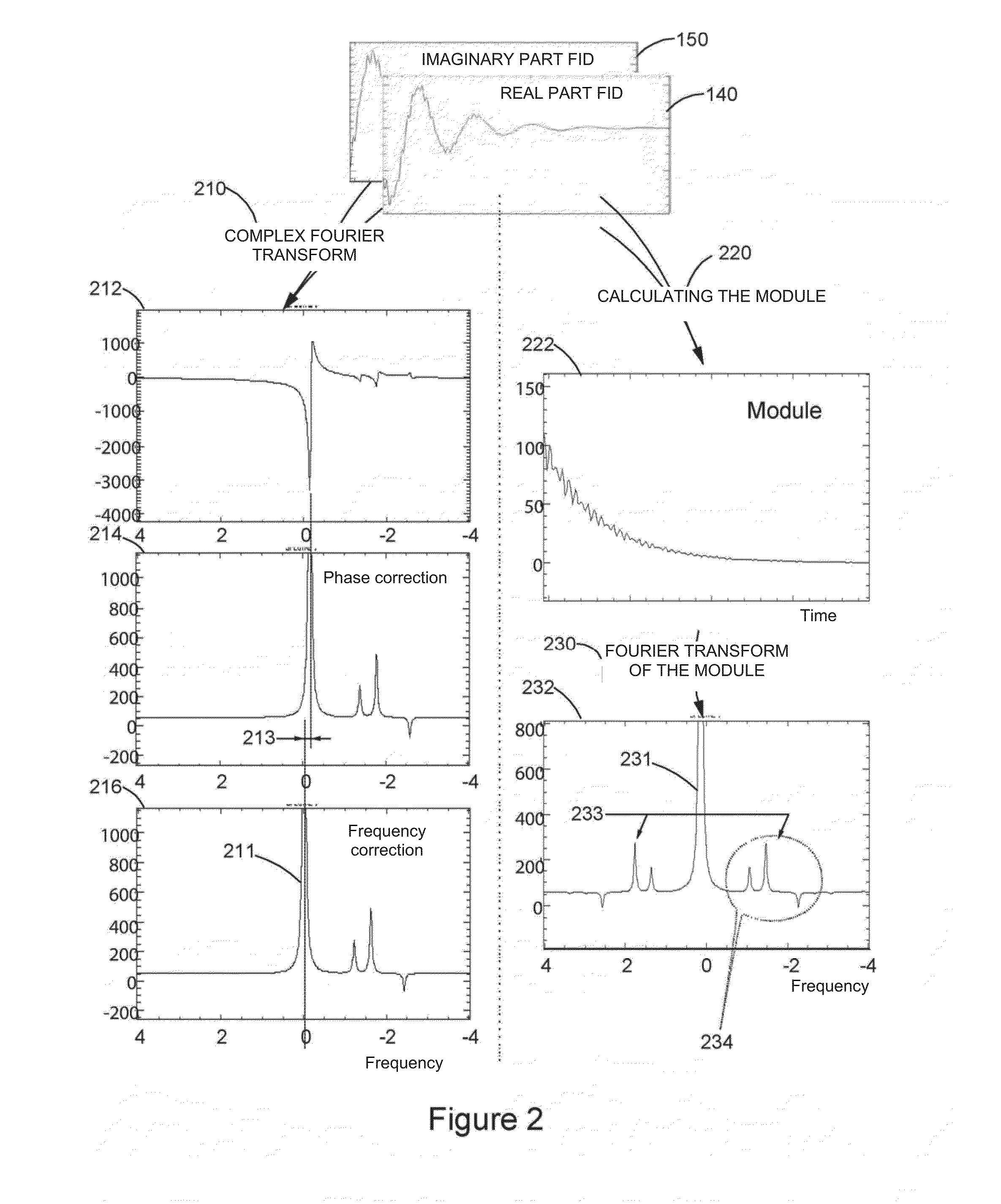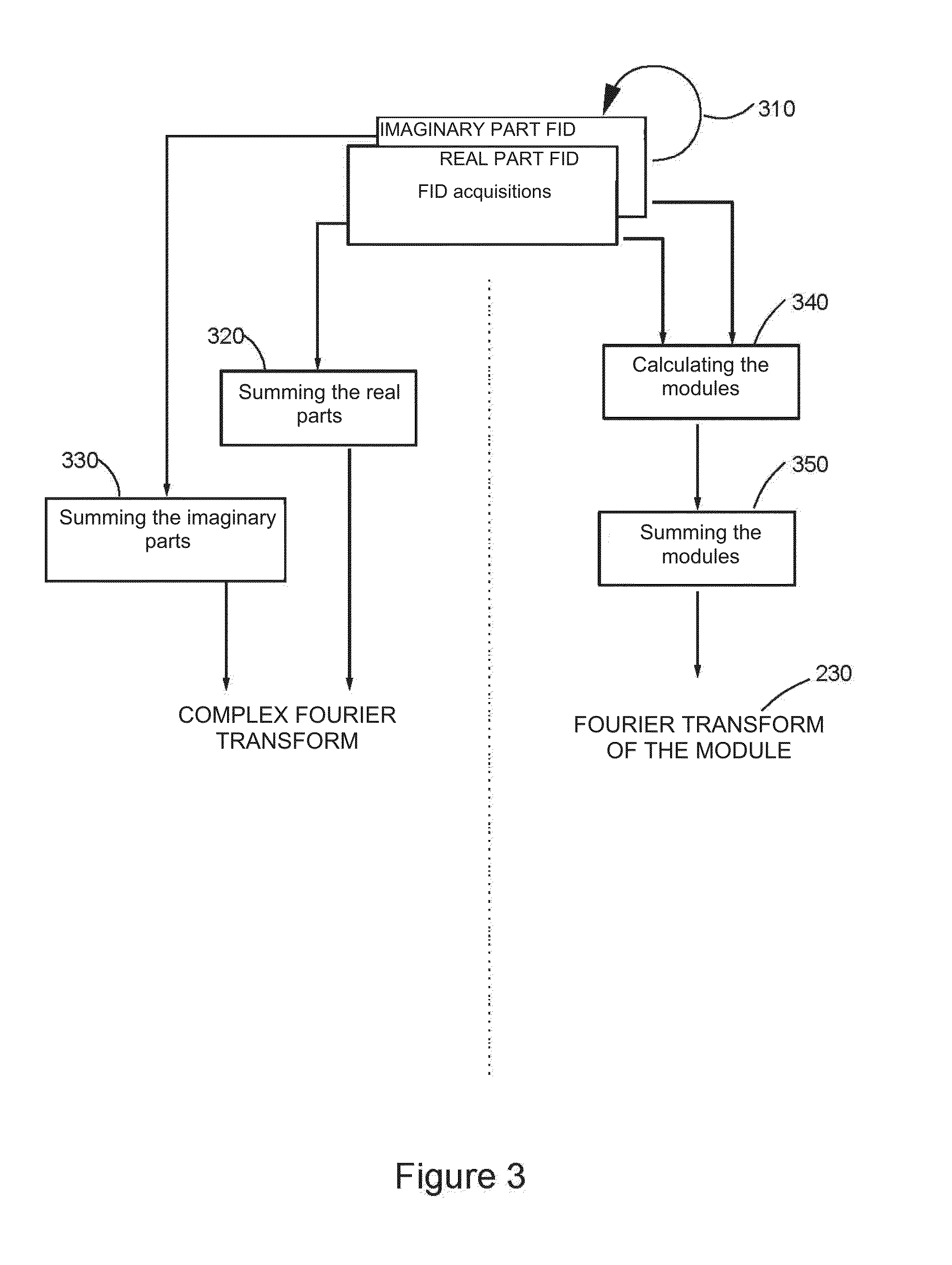Method for analysis by nuclear magnetic resonance of a sample including a species to be characterized and a reference species
- Summary
- Abstract
- Description
- Claims
- Application Information
AI Technical Summary
Benefits of technology
Problems solved by technology
Method used
Image
Examples
Embodiment Construction
[0150]FIG. 1 briefly describes the type of signals detected by any antenna of NMR equipment. The signal may be observed after each emission of an electromagnetic pulse B1 used to disturb the hydrogen nuclei, or protons which are steady in the constant magnetic field B0. As seen above, the RF frequency used should preferably be resonating with the Larmor frequency of protons for the intensity of the magnetic field B0 developed by the NMR equipment considered and which is all the higher as the field B0 is great. As mentioned above, it grows by 42 MHz per Tesla.
[0151]The detected NMR signal is called a FID (for “free induction decay”) signal. It is representative of the return to a steady-state of the nuclei after the electromagnetic disturbance which they are subject to has ceased. Using conventional means which are not described and which are not necessary for understanding the invention, the captured FID signal is delivered by an elementary volume unit of the area covered by the ant...
PUM
 Login to View More
Login to View More Abstract
Description
Claims
Application Information
 Login to View More
Login to View More - R&D
- Intellectual Property
- Life Sciences
- Materials
- Tech Scout
- Unparalleled Data Quality
- Higher Quality Content
- 60% Fewer Hallucinations
Browse by: Latest US Patents, China's latest patents, Technical Efficacy Thesaurus, Application Domain, Technology Topic, Popular Technical Reports.
© 2025 PatSnap. All rights reserved.Legal|Privacy policy|Modern Slavery Act Transparency Statement|Sitemap|About US| Contact US: help@patsnap.com



